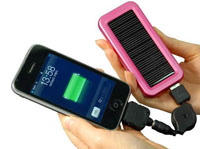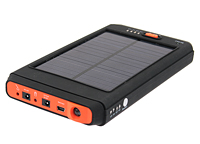How to Choose the Best Portable Solar Charger for Your Devices
As portable solar chargers become increasingly popular among outdoor enthusiasts and travelers, choosing the right one for your specific needs can be challenging. This comprehensive guide provides essential tips and considerations to help you select the best portable solar charger for your devices.
Understanding Portable Solar Chargers
Portable solar chargers convert sunlight into electrical energy, allowing you to charge your devices on the go. These chargers typically consist of solar panels and may include integrated batteries to store energy for later use. The performance and suitability of a solar charger depend on various factors, including panel efficiency, output capacity, and additional features.
Key Factors to Consider
1. Solar Panel Efficiency
The efficiency of solar panels determines how effectively they convert sunlight into electricity. Higher efficiency panels can generate more power in less time and under lower light conditions.
- Monocrystalline Panels: These are generally more efficient and durable, offering higher power output per square inch.
- Polycrystalline Panels: While slightly less efficient, they are typically more affordable and still provide adequate performance for most applications.
2. Output Capacity
Output capacity, measured in watts (W), indicates the maximum power a solar charger can produce. Your choice should align with the power requirements of your devices.
- Small Devices (Smartphones, MP3 Players): A solar charger with 5-10W capacity should suffice.
- Medium Devices (Tablets, Cameras): Look for chargers with 10-20W capacity.
- Large Devices (Laptops, Portable Power Stations): Opt for chargers with 20W or more.
3. Battery Integration
Some portable solar chargers come with built-in batteries, allowing you to store energy for use when sunlight is unavailable. Consider whether you need this feature based on your typical usage scenarios.
- Integrated Batteries: Convenient for storing power, but add to the weight and cost.
- No Battery: Lighter and often more affordable, but require direct sunlight to charge devices.
4. Portability and Durability
For outdoor use, portability and durability are crucial. Evaluate the size, weight, and build quality of the charger.
- Foldable Designs: These are compact and easy to carry, making them ideal for hiking and camping.
- Rugged Construction: Water-resistant and shockproof features are essential for reliability in harsh conditions.
5. Charging Speed and Compatibility
The charging speed depends on the output current (measured in amps) and the efficiency of the solar panel. Ensure the solar charger is compatible with your devices.
- USB Ports: Multiple ports can charge several devices simultaneously.
- Fast Charging: Some models offer quick charge capabilities, reducing the time required to power up your devices.
6. Additional Features
Consider any extra features that might enhance the functionality and convenience of the solar charger.
- LED Indicators: Provide information on charging status and battery levels.
- Built-in Flashlights: Useful for nighttime or emergency situations.
- Attachment Points: Hooks or loops to secure the charger to backpacks or tents.
Evaluating Your Needs
1. Type of Activities
Identify the primary activities for which you will use the solar charger. Different activities may require different specifications.
- Backpacking and Hiking: Lightweight and compact chargers are preferable.
- Camping and RVing: Larger chargers with higher output and integrated batteries may be more suitable.
2. Device Power Requirements
List the devices you plan to charge and their power requirements. This helps in determining the appropriate output capacity and number of ports needed.
- Smartphones: Typically require 5V/1A or 5V/2A.
- Tablets and Cameras: Generally need 5V/2A or higher.
- Laptops: May require 12V or 20V output, depending on the model.
3. Duration and Location of Use
Consider the duration of your trips and the availability of sunlight in your chosen locations.
- Short Trips: A small, efficient charger without an integrated battery may suffice.
- Extended Trips: Chargers with built-in batteries and higher capacity are recommended.
Making an Informed Decision
Choosing the best portable solar charger for your devices involves careful consideration of various factors, including panel efficiency, output capacity, portability, and specific use cases. By evaluating your needs and understanding the technical specifications, you can select a solar charger that ensures your devices remain powered, enhancing your outdoor experiences and providing reliable energy on the go.
 Solar power today
Solar power today Portable solar battery charger for cell phone
Portable solar battery charger for cell phone Solar plants
Solar plants Solar energy
Solar energy Solar panels for houses
Solar panels for houses Portable solar charger for laptop
Portable solar charger for laptop